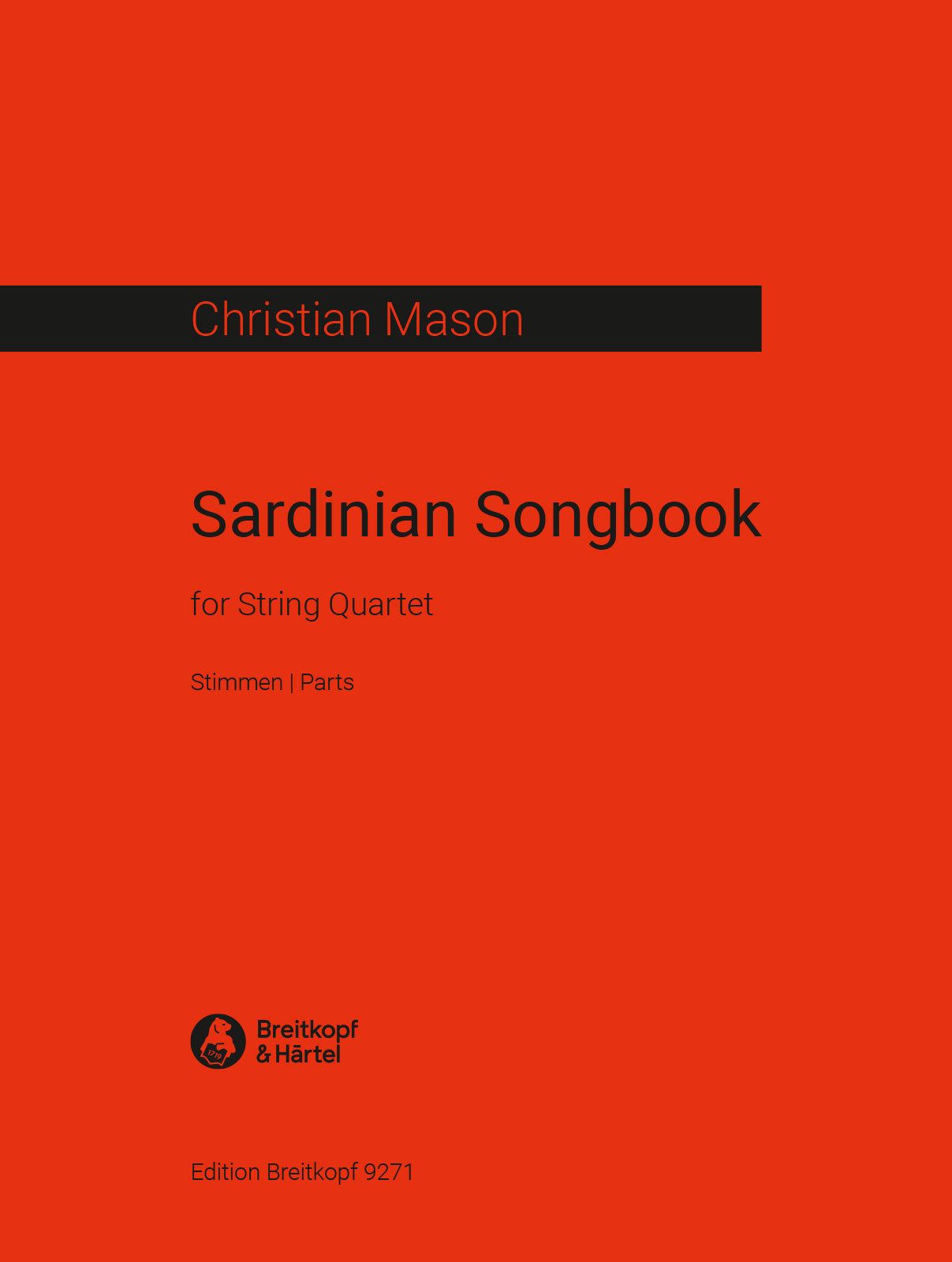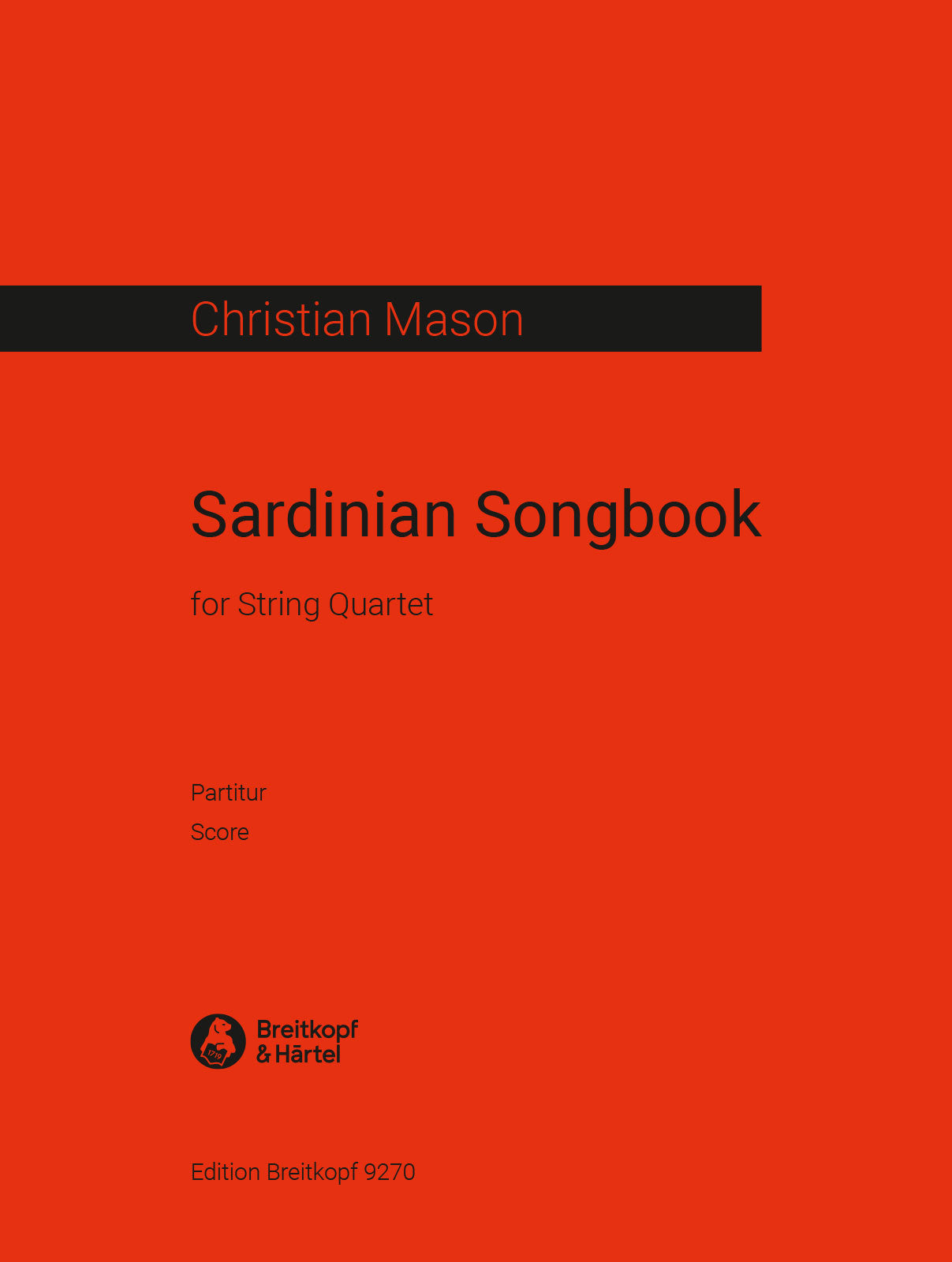Mason: Sardinian Songbook
Expected to ship in 1-2 weeks.
- Composer: Christian Mason (1984-)
- Instrumentation: String Quartet (Violin I, Violin II, Viola, Cello)
- Work: Sardinian Songbook
- ISMN:
- Size: 9.1 x 12.0 inches
- Pages: 54
Description
World premiere: Sheffield/UK, Firth Hall, April 14, 2018
Commissioned by Ligeti Quartet
I fell in love with the remarkable singing of the Tenors di Bitti on hearing their recordings as a student. Their uniquely intense vocal timbre, their harmony, which seemed pure and rough at once, and the sense that this music was, at root, not so much about performance as simply being together in the world, in a community of spirit. At the time, I had no intention of using this music to my own creative ends, but now, here we are: Sardinian Songbook is the second in a cycle of works for the Ligeti Quartet, all based on transcriptions of music from different throat-singing traditions. Like string quartets, the tenores usually sing in groups of four voices, but being free from instruments they stand very close together enabling the resonances of their voices to blend and interact in a special way. The quartet, of course, can only sit so close before their bows clash, so I have chosen instead to reflect this physical closeness inversely, by getting the players to stand increasingly far from one another as the piece progresses. in so doing, the initial state of sonic blend gives way to hocketing lines, opening up the sense of space.
Christian Mason, 2018
The four movements may be played separately or as a collection. If played together the following order should be observed (see table of contents).
Publishers use a lot of words to describe what they sell, and we know it can be confusing. We've tried to be as clear as possible to make sure you get exactly what you are looking for. Below are descriptions of the terms that we use to describe the various formats that music often comes in.
Choral Score
A score for vocalists that only contains the vocal lines. The instrumental parts are not there for reference. Generally, cheaper than a vocal score and requires multiple copies for purchase.
Facsimile
Reproductions of the original hand-written scores from the composer.
Full Score
For ensemble music, this indicates that the edition contains all parts on a single system (there are not separate parts for each player). In larger ensembles, this is for the conductor.
Hardcover
Hardbound. Generally either linen-covered or half-leather.
Orchestral Parts
Similar to a wind set, this is a collection of parts. In the case of strings, the numbers listed are the number of copies included, though generally these are available individually (often with minimum quantities required).
Paperback
When publishers offer multiple bindings (e.g. hardcover) or study scores, this is the "standard" version. If you're planning to play the music, this is probably what you want.
Performance / Playing Score
A score of the music containing all parts on one system, intended for players to share. There are not separate parts for each player.
Set of Parts
For ensemble music, this indicates that there are separate individual parts for each player.
Solo Part with Piano Reduction
For solo pieces with orchestra, this is a version that contains a piano reduction of the orchestra parts. For piano pieces, two copies are typically needed for performance.
Study Score
A small (think choral size) copy of the complete score meant for studying, and not playing. They make great add-ons when learning concertos and small chamber works.
Vocal Score
A score prepared for vocalists that includes the piano/organ part or a reduction of the instrumental parts.
Wind Set
For orchestral music, this is a collection of wind and percussion parts. The specific quantities of each instrument are notated.
With Audio
In addition to the printed music, the edition contains recordings of the pieces. This may be an included CD, or access to files on the internet.
With / Without Fingering (Markings)
Some publishers prepare two copies - a pure Urtext edition that includes no fingering (or bowing) suggestions and a lightly edited version that includes a minimal number of editorial markings.




